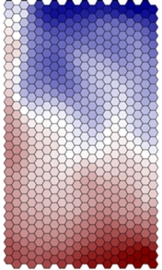 |
Date Announced: 15 Feb 2013
Research Engineer Gary Stevens of G&H will be delivering an update on progress in research on using ZBLAN and Chalcogenide fibers for mid-IR fused devices as part of the Minerva Project at the US-UK Workshop in Mid-IR to THz Technology and Applications 18 - 19 February in Edinburgh. Gary will also present on on recent developments in chalcogenide fibers and the challenges this creates in building fused components in the mid-IR range.
The MINERVA (MId- to NEaR infrared spectroscopy for improVed medical diAgnostics) project is funded with 7.3 M€ under the European Commission’s Seventh Framework Programme (FP7-ICT) and runs from November 2012 until October 2016. Project cost 10.6 M€.
In recent years it has become clear that mid-IR imaging spectroscopy has the potential to open a new chapter in bio-medical imaging and offers an effective tool for early cancer diagnosis and improved survival rates. Rather than a search for “cancer marker” absorption peaks, great progress has been made by analysing the entire bio-molecular mid-IR spectral signature using automated algorithms. However, the lack of suitable sources, detectors and components has restricted the technology to one of academic interest, based on weak thermal sources, low power lasers or synchrotron research tools. For the first time the photonic technology is in place to develop a new mid-IR technology platform on which entirely novel supercontinuum sources (c. 1000x brighter than thermal sources) covering the whole range from 1.5 to 12 μm.
According to Professor Nicholas Stone, Professor of Biomedical Imaging and Biosensing at the University of Exeter’s School of Physics: “The field of vibrational spectroscopy applied to medicine is rapidly advancing and many groups have now demonstrated the capability of mid-infrared imaging to identify subtle disease specific changes in the molecular composition of tissues and cells. The MINERVA project will take this technique to the next level by enabling it to be utilised much more rapidly, by developing bright ir sources and sensitive detector arrays we expect to be able to capture diagnostic images of unstained tissues and cells in a matter of seconds. In addition clever data analysis methods will allow the image to be superimposed on each other and standard histopathology images of the same sample. The potential for revolutionising the current methods of clinical diagnosis are huge.”
The MINERVA project runs until 2015 and is led by optical technology providers Gooch & Housego. Other participants include:
For further information please visit the MINERVA website.
About Gooch & Housego
Gooch & Housego is a vertically integrated supplier of critical photonic solutions: optical components, assemblies and sub-systems, in addition to light measurement instrumentation and services to the Aerospace & Defense, Biomedical, Industrial and R&D sectors. World leading design, development and manufacturing expertise is offered across a broad, complementary range of technologies:
The organization is proud of its quality assurance and of its AS9100, ISO9001 and SC21 accreditation and is expects to be awarded BS EN9100 standard shortly.
The company was founded in 1948 and has today six manufacturing sites in the USA and two in the United Kingdom in addition to sales offices in China, France, Germany, Japan and Singapore and an extensive network of distributors.
For more information, please visit www.goochandhousego.com or e-mail us at sales@goochandhousego.com
####
E-mail: marketing@goochandhousego.com
Web Site: goochandhousego.com/
| © 2025 SPIE Europe |
|